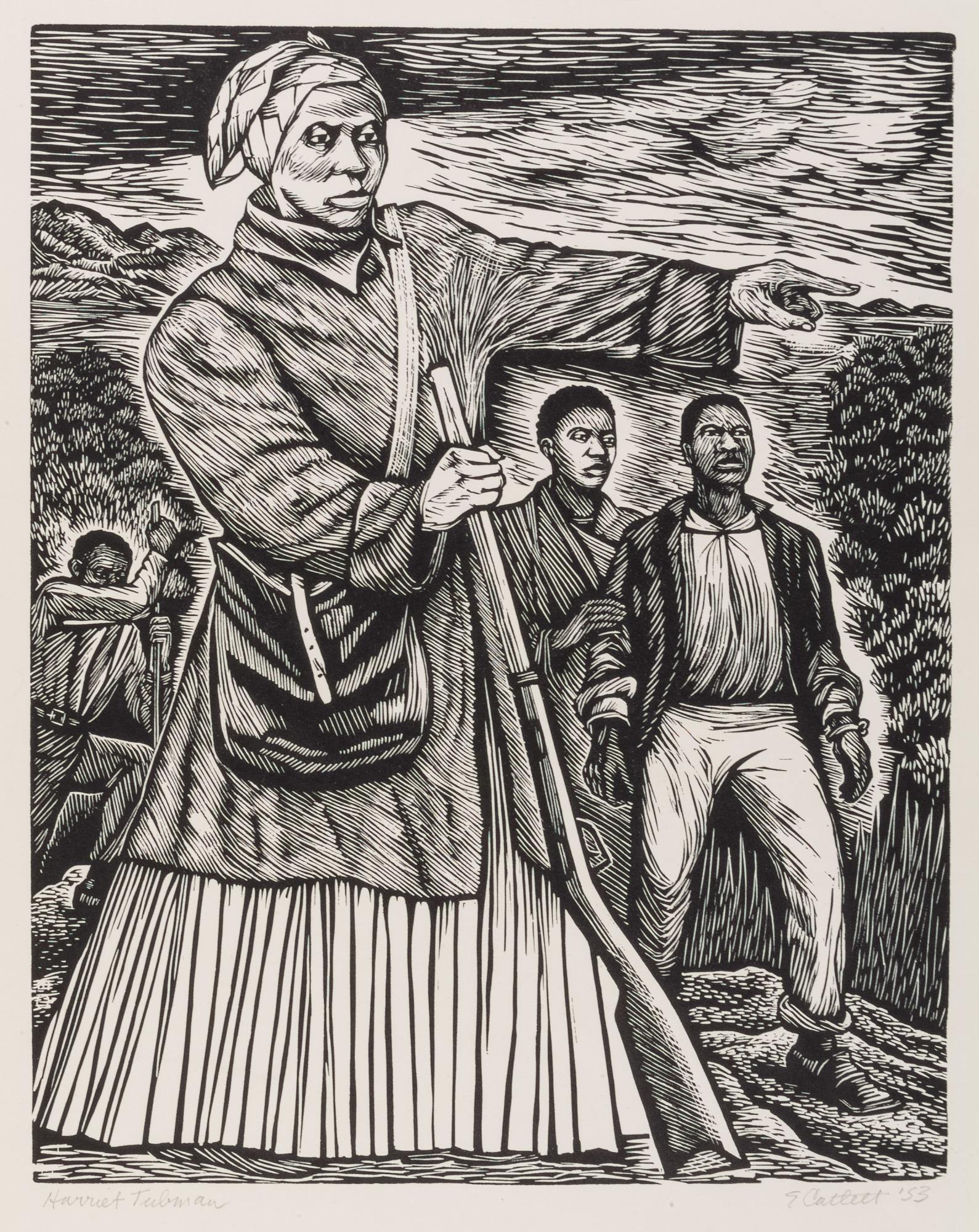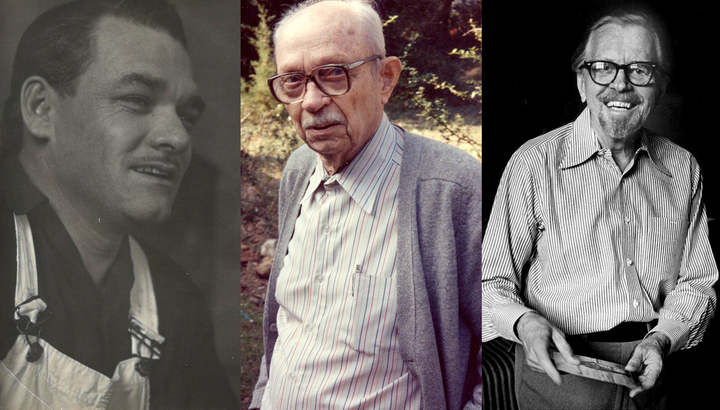The Carter Blog
Carter ARTicles
Elizabeth Catlett: Multiple identities in art and life
Nov 06, 2024
Printmaker. Sculptor. American citizen. Mexican citizen. Granddaughter of enslaved people. First MFA graduate from the University of Iowa. Activist. American political exile. Elizabeth Catlett’s identities during her 96 years are rich and multifaceted. An early mentor, Grant Wood (painter of Parson Weems’ Fable in the Carter’s collection), counseled Catlett to create art “about something that you know the most about.” She did, focusing on the Black female experience for most of her six-decade career in printing and sculpture.
I first saw Catlett’s work before I worked for the Carter, when Sharecropper was exhibited in April of 2021. In the artwork, the woman’s strong neck and faraway gaze under her wide-brimmed hat were compelling. I wondered how a linocut could convey such a poised subject while the safety pin holding her cloak together hinted at her years of hardship.
Of her 70 prints, Catlett's biographer, Melanie Herzog, claims, “[They] cry out in protest, proclaim solidarity, demand justice, and celebrate the determination and . . . sheer survival of ordinary people.” For me, Catlett’s Harriet Tubman fulfills this description though it differs from the Carter’s two other Catlett prints. Tubman’s full-length portrait as its subject and its active background with human figures and a changing landscape construct a narrative.
Catlett emphasizes Tubman’s leadership of formerly enslaved people through her pointing gesture, a walking stick which is, in fact, a musket, and a “crossbody bag,” conceivably containing supplies. However, her role might be best illustrated through the first of three men behind her who wears the remnant of shackles on his wrist. As the most well-known “conductor” of the Underground Railroad, Tubman made 19 trips back to the South after her own self-liberating journey and guided over 300 formerly enslaved people to freedom. Catlett depicts these arduous journeys by carving a complex landscape into the background with different patterns for moving skies, mountains, bushes, grasses, and rough terrain.
The crossbody bag, however, holds some mystery: what might be inside? I often pose this question to students. The “What’s in Your Bag?” lesson explores Tubman’s additional identities: a Union Army nurse during the Civil War, a scout who organized groups of spies, the first woman in U.S. history to both plan and lead a raid, a staunch women’s suffrage supporter, and the founder of a home for the aged. Like Catlett, Tubman also had many identities. The discussion with students leads to how we might depict our own identities through what we carry in our own bags.
The Tubman print was one in a series of Black heroes that Catlett proposed to the El Taller de Gráfica Popular (the People’s Graphic Workshop), where she worked in Mexico City. Each artist depicted at least one of 16 heroes. Adopting Black American subjects was a radical move for her Mexican coworkers, especially considering Mexico’s sociopolitical culture.
While the Mexican art movement encouraged public art, its visual representation was based on mexicanidad (“mexicanness”), which depended on mestizaje, a Mexican identity mixing Indigenous and Spanish heritage. This synthesis, promoted by the government, excluded anyone with Black ancestry. In fact, only in the 2015 census could Afro-Mexicans identify themselves. Catlett pushed against the Mexican policy of Black erasure by advocating for the representation of important Black figures and history in art. In so doing, she created a Black presence amid a system of Black absence.
Catlett’s activism led her to join a Mexican railroad workers’ strike in 1959. She was later forcibly taken from her home by Mexican authorities and imprisoned as a “foreign agitator.” After her release, Catlett applied for Mexican citizenship to avoid similar scenarios and deportation. When her citizenship was granted in 1962, however, American authorities pronounced her an “undesirable alien” and banned her from the U.S. Only in 2002, when she was 85, was her American citizenship reinstated; but she remained in Mexico.
According to one of her former students, Samella Lewis, Catlett once said, “I know very well that, if I had continued to live in the United States, I would not have developed as I did. If I had been able to look ahead and see what would happen in my life by staying in Mexico, I would have done the very same thing.”
Catlett, who lived until 2012, embodied the strength of her art subjects. Rarely has an American artist acculturated so deeply, creating art that continues to transform viewers in both her adopted and native homes.
Want more Elizabeth Catlett? Elizabeth Catlett: A Black Revolutionary Artist and All That It Implies, a traveling exhibition organized by the Brooklyn Museum and the National Gallery of Art, includes more than 150 of her works!






